Paul Pogba’s return to Manchester United in 2016 caused quite the stir, with the French international joining the club for a world record fee after previously being let go on a free transfer. The signing was a signal of intent from a club looking to get back to their former glory but since then, Pogba has been a subject of great debate. On his day the midfielder is easily one of the best in the world but since signing for the Red Devils, he has failed to show his best on a consistent basis for the Premier League giants.
Opinions are divided on the Frenchman and many have questioned why the 27-year-old is unable to replicate the same form that he shows for his country while playing for his club. In this tactical analysis, presented as a scout report, we will look at the tactics of Manchester United and specifically Pogba’s role to identify if he can still fit in the United midfield.
Pogba’s current role
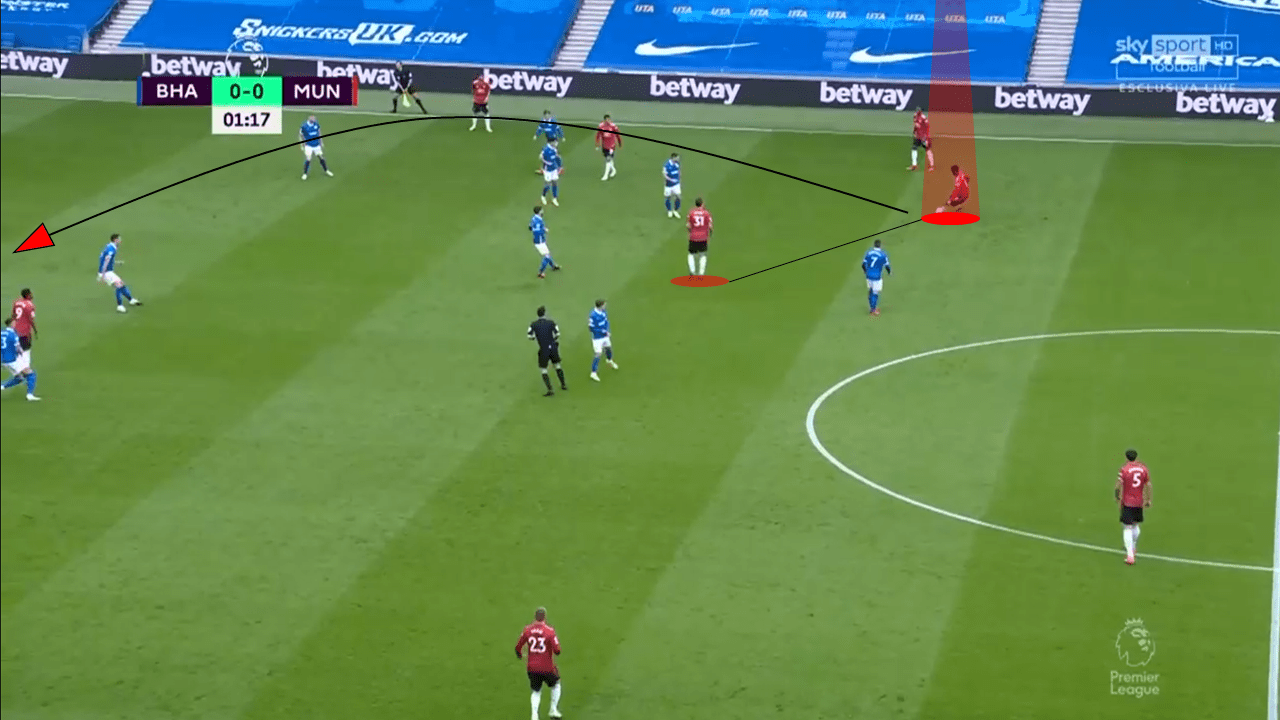
Ole Gunnar Solskjær has predominantly opted for the 4-2-3-1 formation with a double pivot in midfield sitting just ahead of the centre-backs. While there were calls for Pogba to be given the number 10 role owing to his natural creativity and passing qualities, the signing of Bruno Fernandes has seen him continue in his defensive midfield spot. Nemanja Matić has been the preferred partner for Pogba in this situation and with the Serbian playing a more defensive role, Pogba has been given the freedom to act as a deep-lying playmaker.
Pogba’s vision and long-range passing are among his best attributes as a player and Solskjær is keen to make use of these abilities. With the pace up front in the likes of Marcus Rashford, Anthony Martial, and Mason Greenwood who were the preferred attackers towards the end of last season, Pogba’s passing could unleash a quick attack in behind the defence.
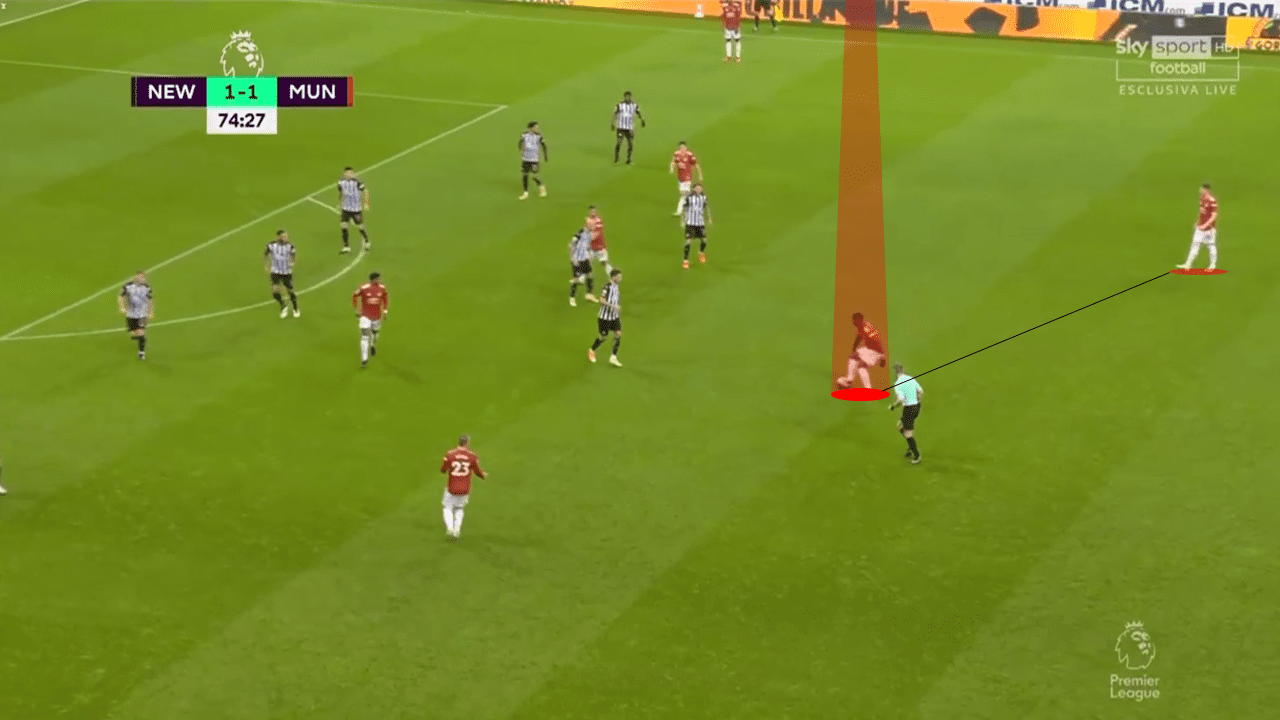
When in search of a goal, Pogba has also been allowed more freedom to push even higher up the pitch, often venturing into the final third to link up with the attackers. In order to thwart the threat that Manchester United pose with their pace, opposition teams prefer to defend in a low block and have seen it prove effective as they suffocate the wingers and close down attacks through the centre. In such situations, Pogba’s creativity and slick movements come into play as the forward looks to work the ball into the penalty area.
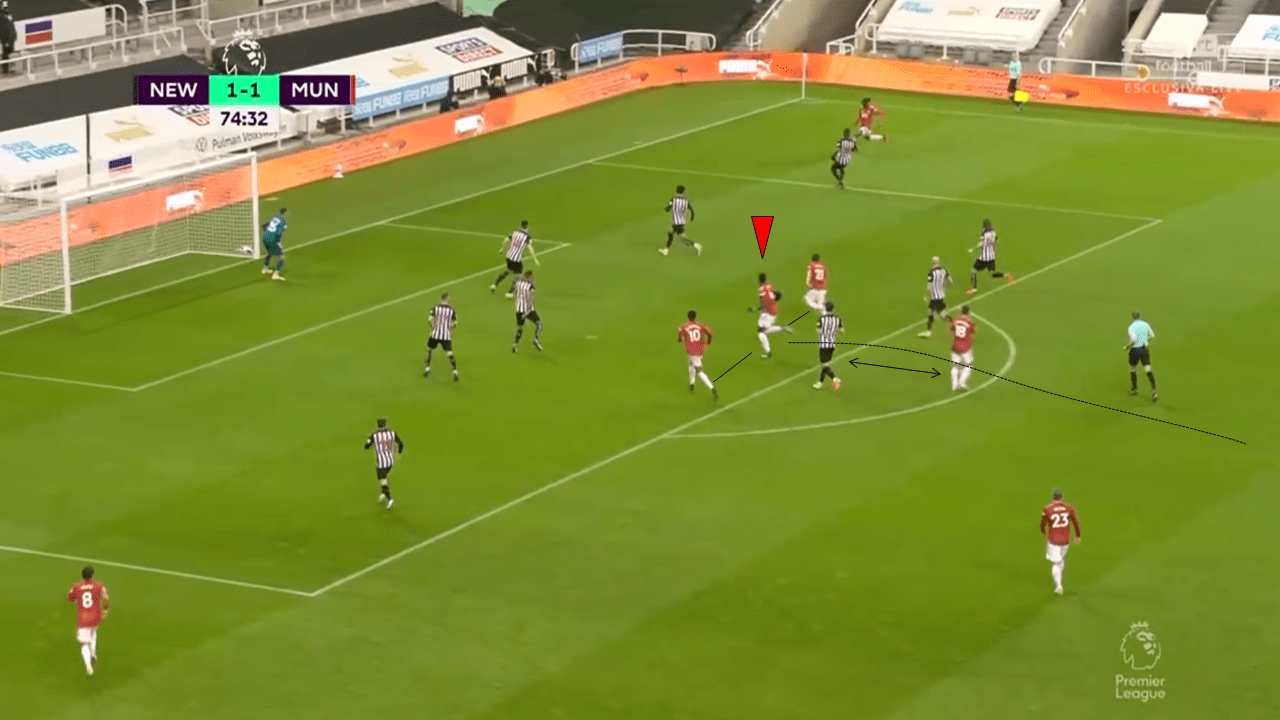
The Frenchman has the vision to find his teammates in space and also willingly runs into the box to join the front line. This sees him sometimes push well out of his defensive midfield role and puts him in a number 10 role during certain phases of the game. His willingness to get forward in such situations is somewhat in contrast to that of Fernandes who although plays in the number 10 role, acts more as a number eight, moving to wide areas and helping to move the ball around as opposed to getting into the box and bursting through the centre.
Such tactics seemingly get more out from Pogba in the attacking sense, as the midfielder can make use of his pace and strength to challenge defenders and look to go for goal. While his original role in the current system remains as the defensive midfielder or the deep-lying playmaker, he also provides the extra attacking option going forward.
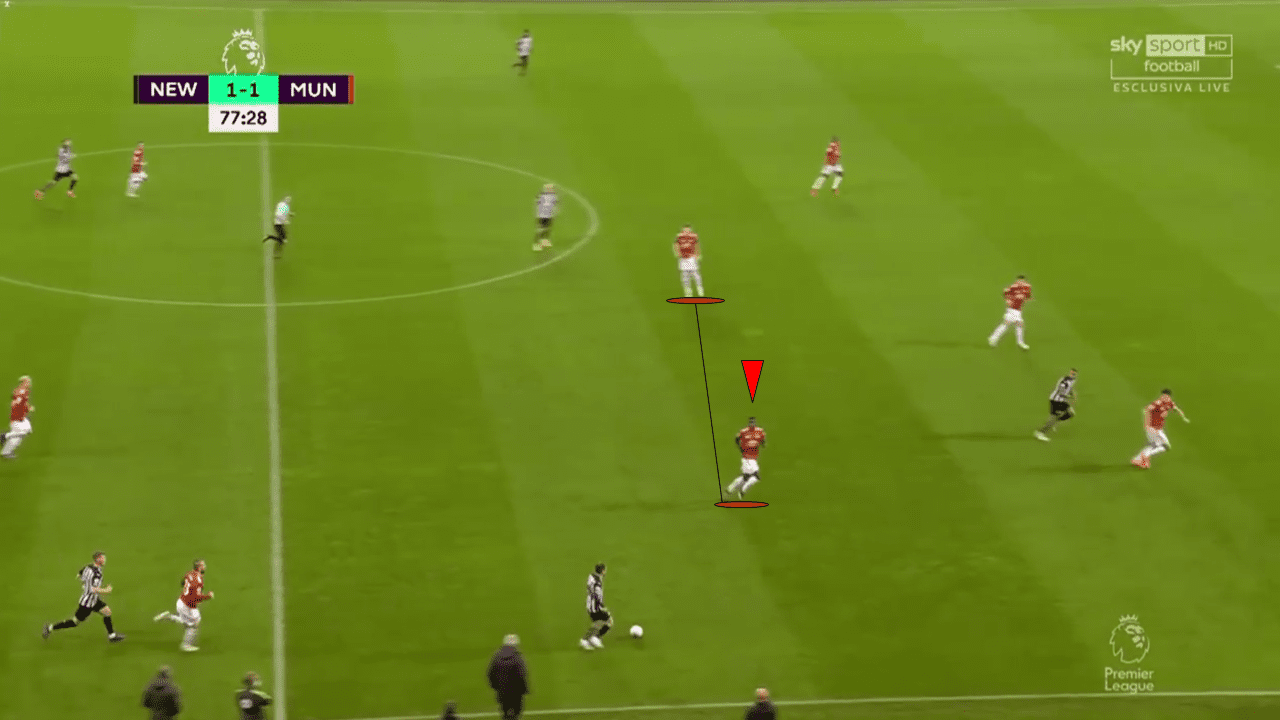
This is not to say that he does not perform his defensive duties though. Pogba, as any defensive midfielder, is a crucial part of providing cover for the full-backs when they attack. A problem for United in the attack has been the lack of width, with the likes of Aaron Wan-Bisakka and Luke Shaw not being able to push as high up as needed for fear of being hit on the counter. In such cases, Pogba is required to stay back so that Solskjær can push his full-backs higher up the pitch and still have adequate cover at the back.
The Frenchman’s physical attributes mean that he is a more than suitable candidate for the defensive midfield role as he is able to handle the pace and strength of the opposition. However, Pogba has sometimes been caught napping as well. The fact that he sometimes gives the ball away cheaply in midfield, getting tackled or misplacing simple passes, has seen him draw great criticism and his inability in certain cases to recover from the mistake in time has seen him receive great criticism. There are times when the Frenchman just does not seem to be in the game and such performances question his ability to play in defensive midfield in the long term. The ability is there though and towards the end of last season, Pogba certainly looked more comfortable in the role.
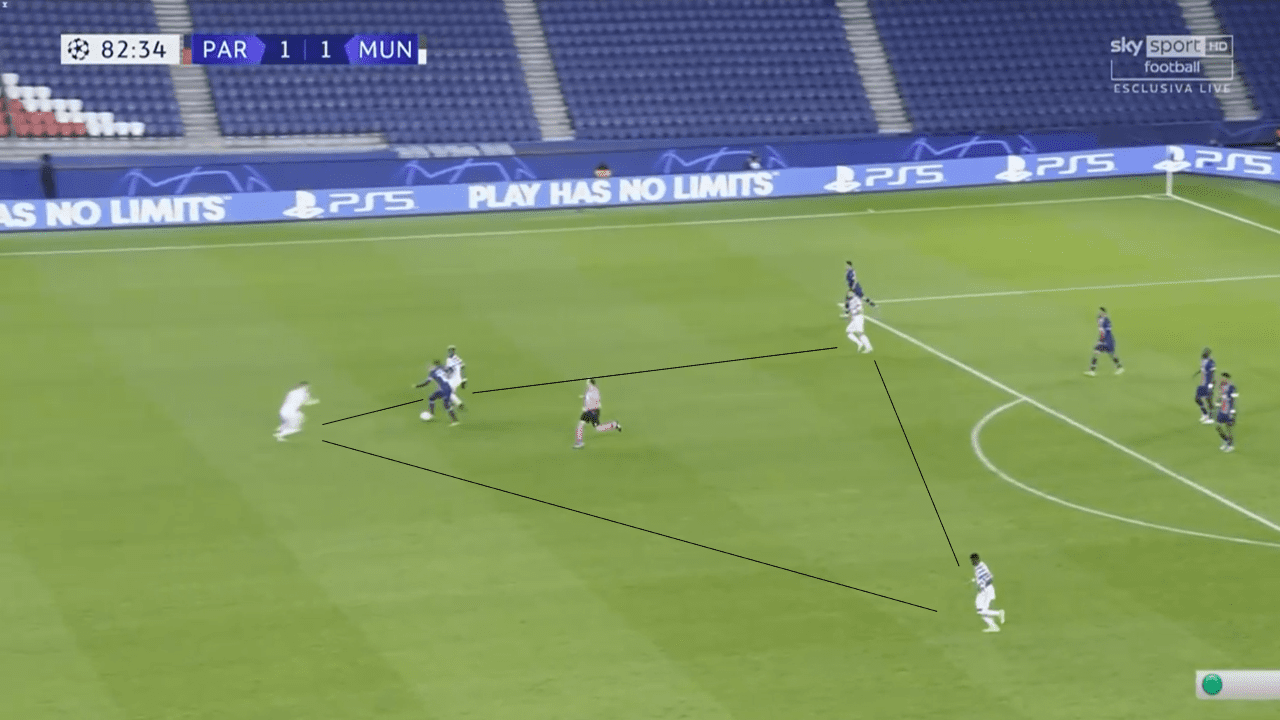
We have also seen Solskjær adopt the midfield diamond as well this season against Paris Saint-Germain, playing Pogba on the left side of it. Fernandes is the obvious choice to be at the head of the diamond while Scott McTominay played at the base with Fred on the right of the diamond. This seemed to bring more out of Pogba, who was afforded even more freedom to push forward and the general formation itself appeared to suit Fernandes, who likes to have midfield runners to interact with.
Pogba was able to get into better positions in the half-spaces and play closer to the edge of the penalty box, causing a major threat to the opposition and eventually bagging himself an assist as well. It also provided suitable cover when being hit on the counter, with Pogba and Fred ready to defend either side while McTominay could look to hold up play.
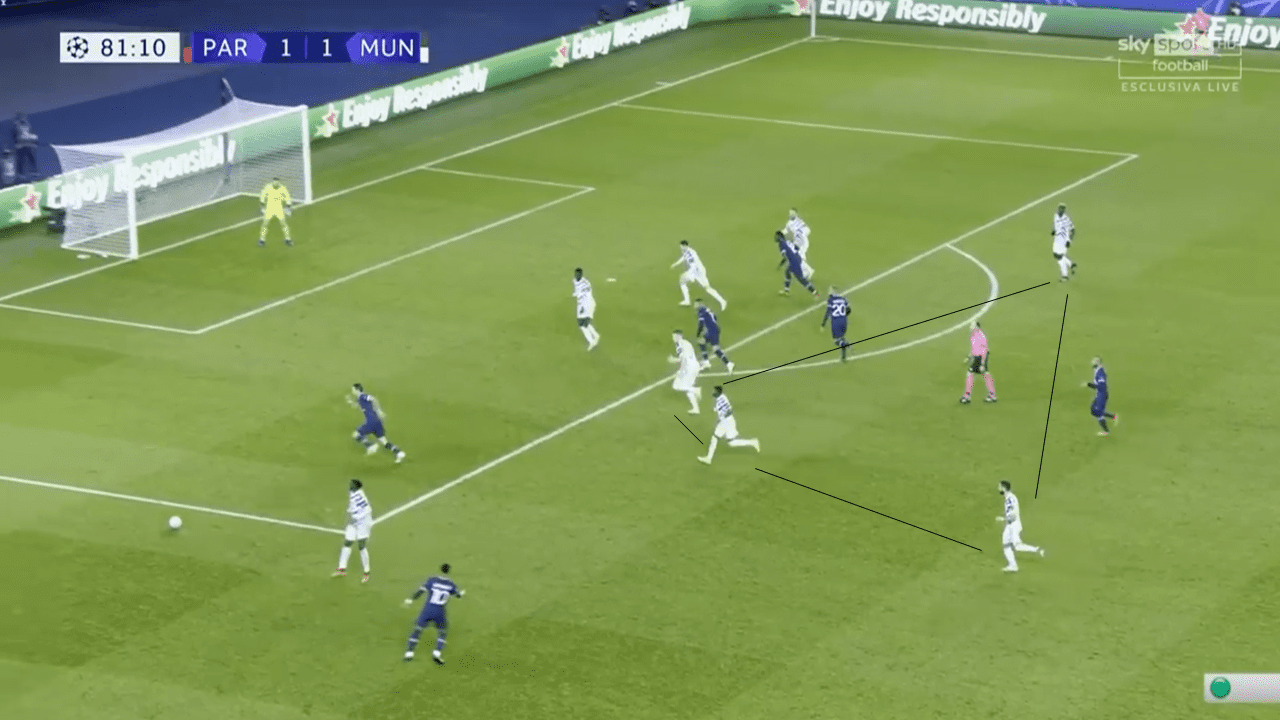
In defence, United could switch to a 4-2-2-2 formation or a 4-3-3 with Pogba either playing alongside Fernandes or joining Fred and McTominay to help the defence. We saw earlier that Pogba does have the required attributes to defend and even with the more attacking role in the diamond, he can still get back to provide support. This gives him somewhat of a box-to-box role, one that he can be caught out in, but his performance in the game against PSG was certainly good signs for Solskjær who can now identify this as another viable option.
Statistical comparison
The next part of our analysis will look at how Pogba compares statistically with the other midfielders in the United side. After seeing his current role, we will look to compare the statistics of the midfielders to identify areas where Pogba excels and then see how to make the most of those skills. The statistics are taken for last season for the respective clubs of the current players.
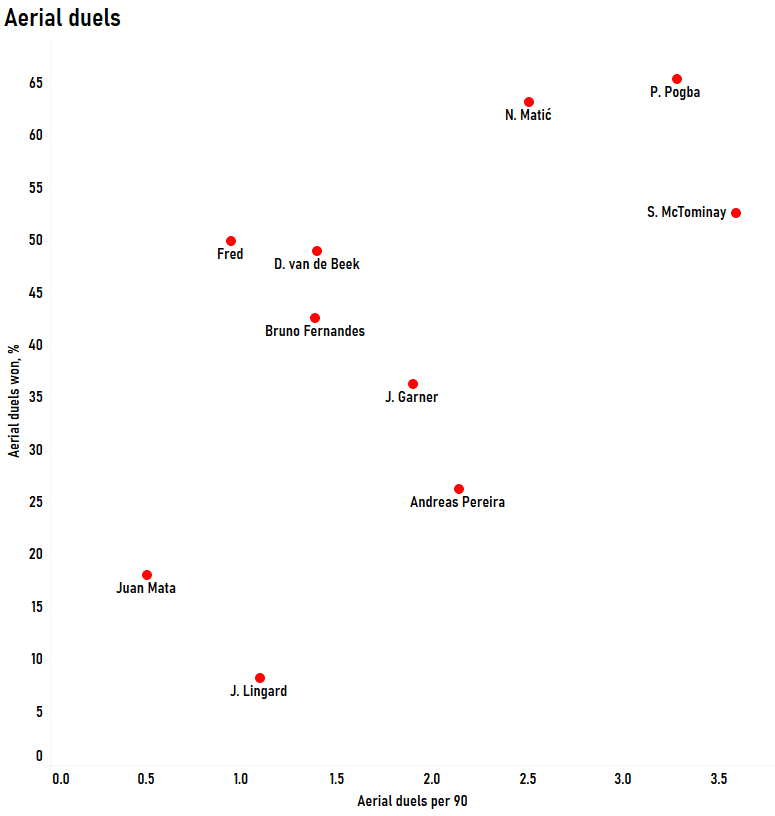
Starting off with the defensive attributes, we see that Pogba’s 3.28 aerial duels per 90 is only second to that of McTominay’s 3.59 per 90. The Frenchman also boasts the highest success rate in this area, winning 65.45% of his duels. Only Matić comes close with his accuracy of 63.29%. Considering that this is more of a defensive attribute, it is understandable as to why the likes of Fernandes and Donny van de Beek rank lower here.
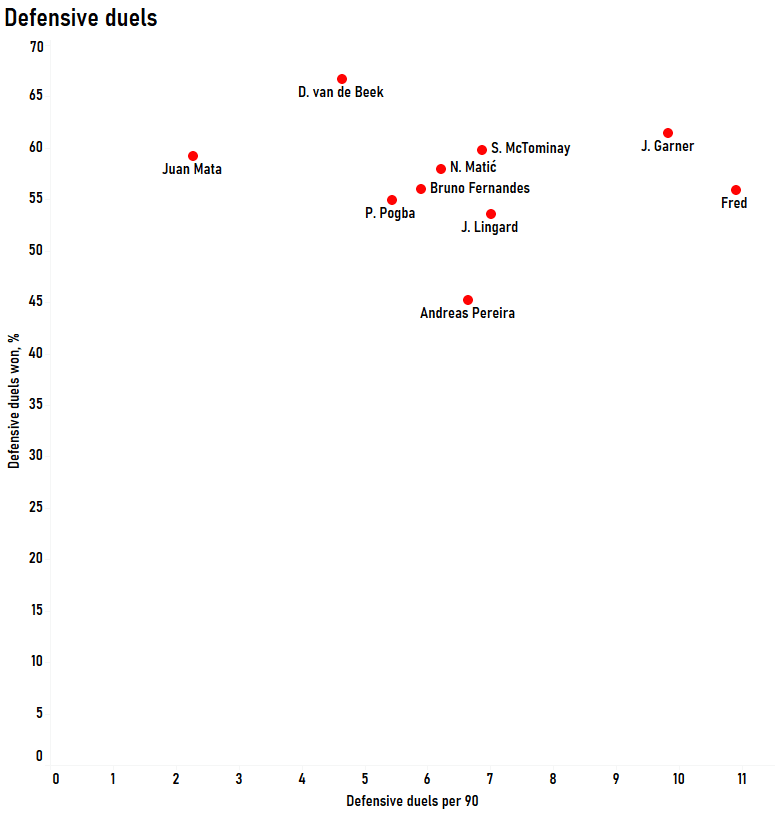
In terms of defensive duels per 90, however, Pogba’s 5.43 duels per 90 are well behind that of Fred’s 10.9 duels per 90. McTominay (6.87), Matić (6.21), and even Fernandes (5.9) all feature higher than Pogba in terms of volume of duels as do Jesse Lingard (7.01) and Andreas Pereira (6.65), both having only a limited number of minutes last season. In fact, only van de Beek and Juan Mata feature lower than Pogba in this aspect, with the former playing as an attacking midfielder for Ajax the last season. This statistic once again calls into question Pogba’s capability and future in the defensive midfield role as despite his freedom to move higher up the pitch, he does have to provide a good defensive output which is not reflected both in terms of volume and success rate in this aspect.
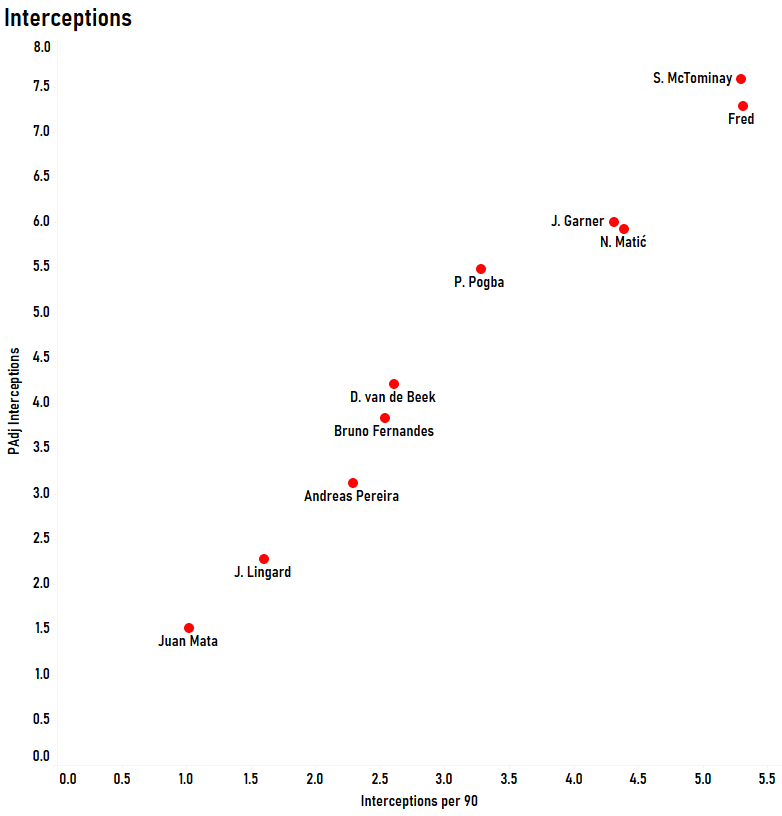
The final defensive statistic that we will look at is the interceptions. Here Pogba seems to be right in the middle of the attacking and defensive midfielders. McTominay (7.58) and Fred (7.28) are the clear leaders in the PAdj interceptions per 90 while Matić (5.93) and James Garner (6.00) are just higher than Pogba’s 5.48 PAdj interceptions per 90. The rest are all attacking midfielders and hence their lower values in this metric but Pogba’s statistic here is once again a concern.
Having been used as a defensive midfielder often, Pogba seems to lack the required performance levels as compared to his teammates in the defensive metrics and it once again questions his use in defensive midfield. The likes of McTominay, Fred and Matić seem best suited to be fighting it out for the defensive midfield spots and the only reason to justify Pogba’s use in his current role would be the following passing metrics.
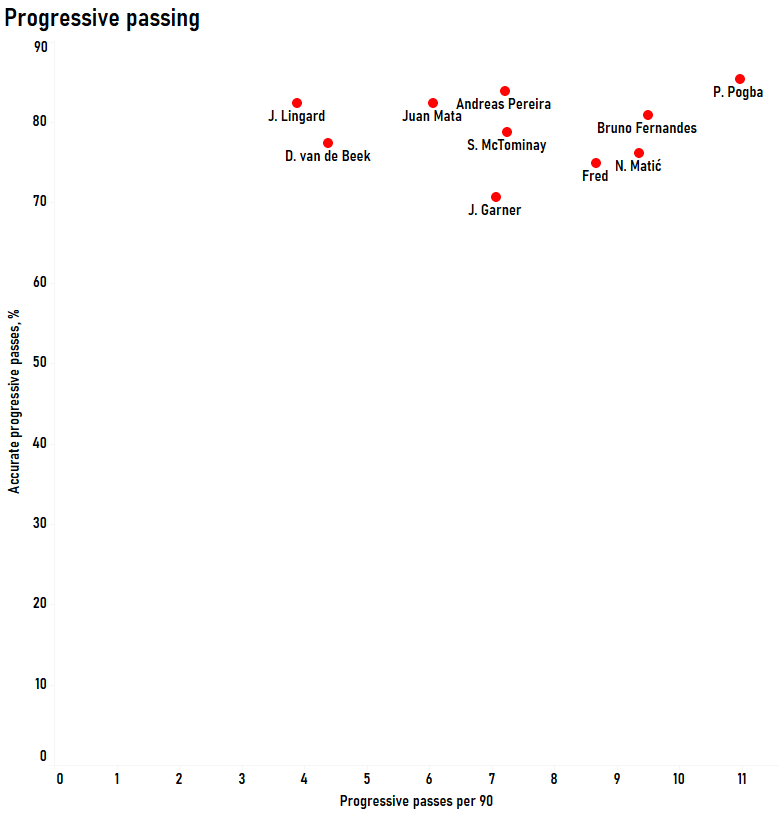
Starting off with the progressive passing, Pogba is the clear leader here with his 10.97 progressive passes per 90 and 85.33% accuracy both being the highest. As we mentioned earlier, the Frenchman’s passing is one of his best attributes and the statistics prove the same. His role as a deep-lying playmaker could possibly be justified with this as it does show his quality of passing with only Fernandes (9.5) having numbers close to him. Matić (9.36) and Fred (8.67) do have decent numbers in terms of volume as well but their accuracy is significantly lower than that of Pogba’s.
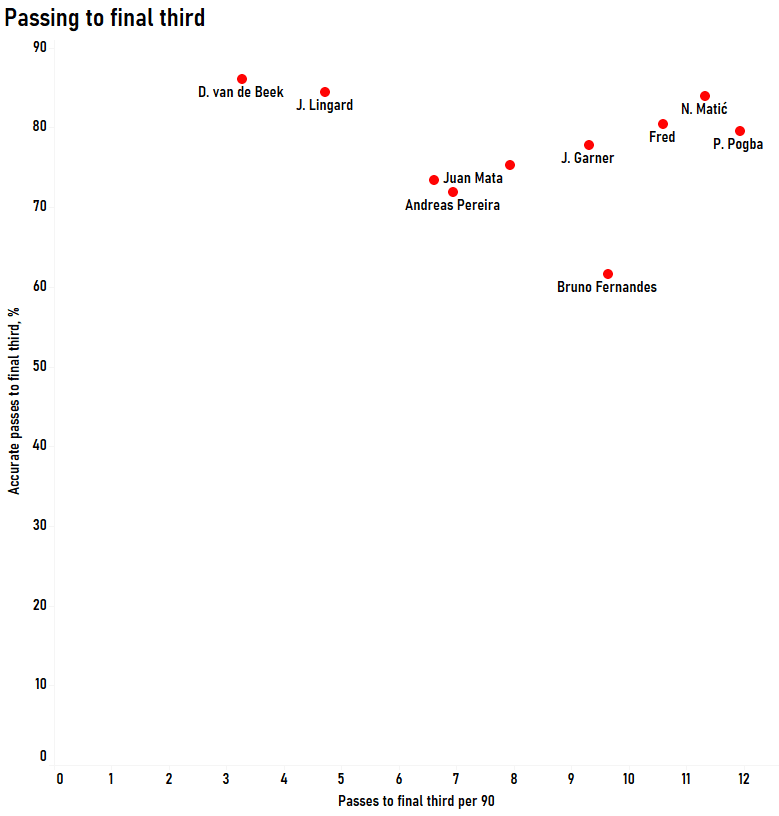
Taking it a step further and moving into the final third passing, we once again see Pogba’s 11.93 passes per 90 leading the way. Matić (11.33) and Fred (10.6) are the only two that come close to the Frenchman although the pair has higher success rates. Fernandes has 9.63 passes to the final third per 90 although his accuracy is much lesser. This usually comes at times when Fernandes drops deeper to collect the ball when searching for a goal and with defenders falling back, his accuracy is lesser. However, Pogba’s passing skill is once again reflected in the statistics.
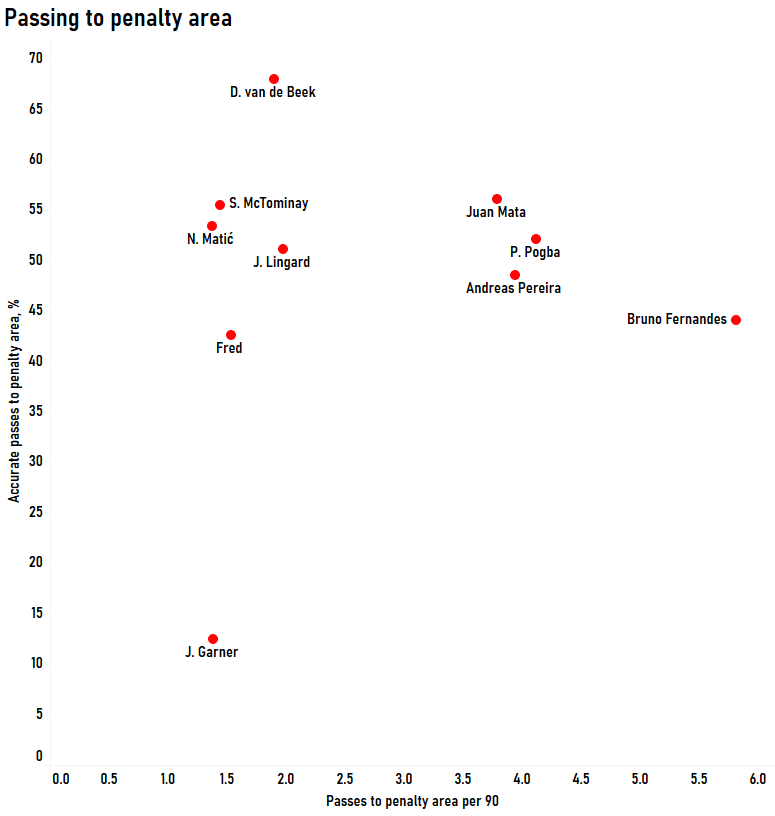
Now the final metric that we will look at is the passing to the penalty area. This is one statistic where Pogba does not lead, but he is second in terms of volume with his 4.12 passes to the penalty area per 90. This is excellent considering how deep the midfielder plays and only the out and out attacking midfielder in Fernandes has more passes (5.81) than him. The other defensive midfielders find themselves well behind and once again we see Pogba in sort of a middle ground between the attacking and defensive midfielders. He is the only one in the squad who can play as the deep-lying playmaker and hence his statistics would look more like a best of both worlds scenario.
Possible formations
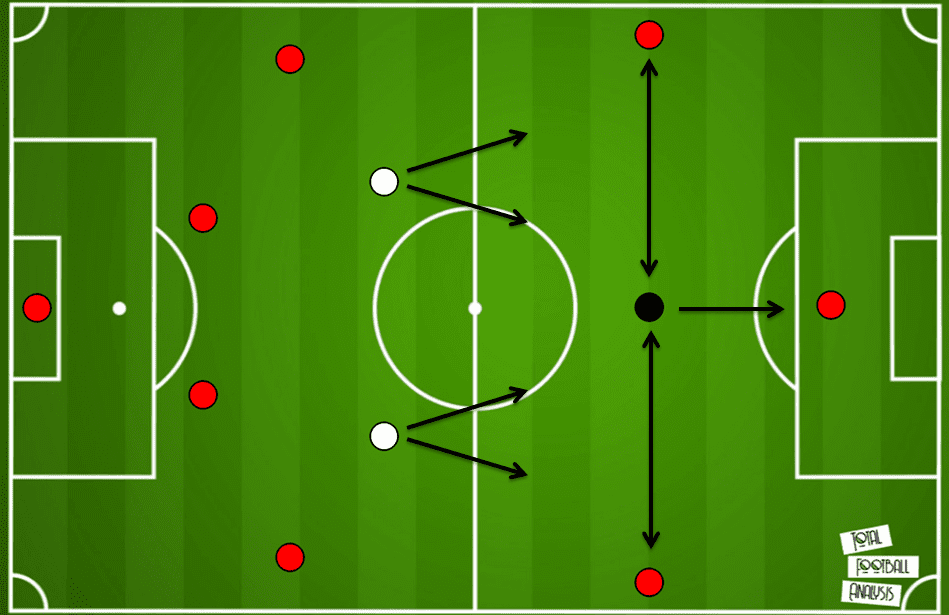
In the final part of our analysis, we will see the possible formations that Manchester United can use and whether or not Pogba can fit in these formations. The first formation is of course the preferred 4-2-3-1 with the two holding midfielders and the attacking midfielder. The white dots represent the positions that Pogba will most likely occupy while the black dot signifies positions where Pogba could play but would have to change his playing style.
This formation is the one under which Pogba has operated for most of his time at United and continuing him in the defensive midfield role is definitely an option. From here, Pogba will continue to act as a deep-lying playmaker and can use his passing skills to break the opposition lines and play his teammates in behind. This has also been a formation that Solskjær has preferred due to the fact that it provides his side with natural width and with their pacey wingers, it is a good tactic to use.
However, one problem in this formation is that Fernandes is not a proper number 10 and does not get into the box often, meaning that the attacking options become limited. Pogba’s passing is also somewhat countered when a side moves into a low block and there are far too many bodies for him to penetrate and link up with his teammates. If he pushes too high up, the opposition can also easily counter through the areas that are now vacant, and considering that the United full-backs are not the quickest to recover, this puts increased pressure on the centre-backs. The 4-2-3-1 formation probably looks best in terms of fitting Pogba in on paper, but in reality, it just does not seem to work considering that it leaves the side open to counter-attacks and vulnerable at the back.
Playing Pogba in the number 10 role would probably be better for the balance of the side and for him to showcase his attacking ability but that would mean benching Fernandes who has certainly proved to be a better creator of chances from that position. Hence, the verdict is still out on Pogba’s involvement in the 4-2-3-1 and could be used against the so-called lesser opposition when United would want to dominate proceedings.
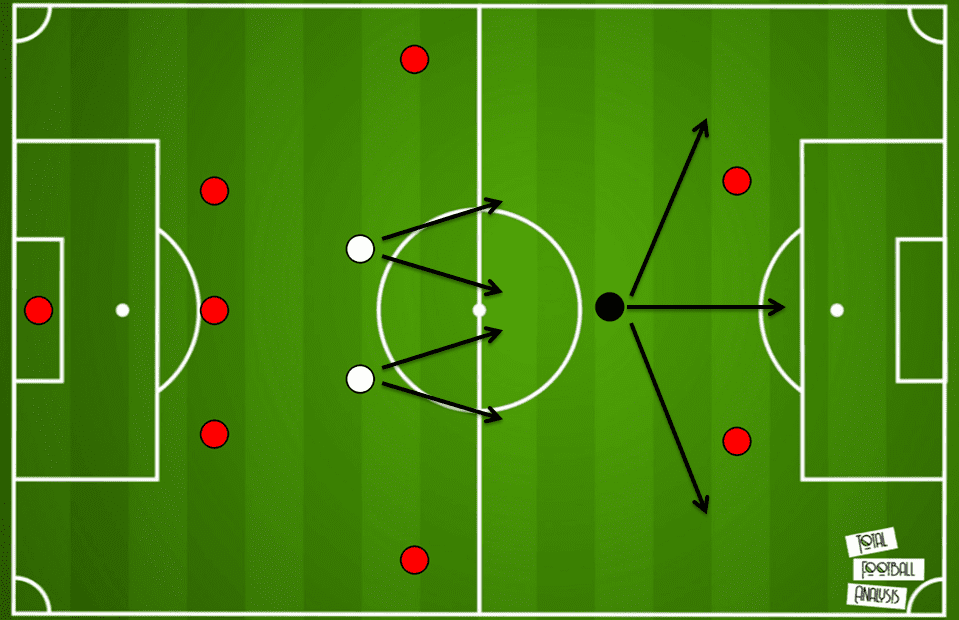
Another formation that has been used, particularly against the top opposition, has been the 3-5-2 of the 3-4-1-2 formation. Solskjær has opted for this formation so that his defence can be adequately covered while at the same time attacking with width with the wing-backs. In such cases, Pogba could possibly play in one of the defensive midfield roles as well. While Fred and McTominay have been the go-to options in these positions, this formation could possibly be used against the so-called lesser opposition as well. This would also allow United to dominate the game and better utilise their wing-backs by giving them the freedom to push higher up the pitch.
Playing Pogba as the deep-lying playmaker would now give him much more freedom and effectively remove him from his defensive duties considering that there would be three centre-backs plus another holding midfielder behind for support. This allows the Frenchman to control the midfield and can see him use his long range passing skills to dominate the game. The number 10 role would also be where Pogba could feature but once again, Fernandes’ style of play would suit this role better considering his wide movements and link up with the wingers and it would be quite a surprise if Pogba was picked over him for this role.
This formation does look promising for United and Pogba would certainly feature in one of the deep lying midfield roles should they use this throughout the season but owing to the fact that Solskjær prefers this only for the tricky games, Fred and McTominay would probably get the nod for their higher defensive work rates to win the ball in midfield. This brings us to our next possible formation.
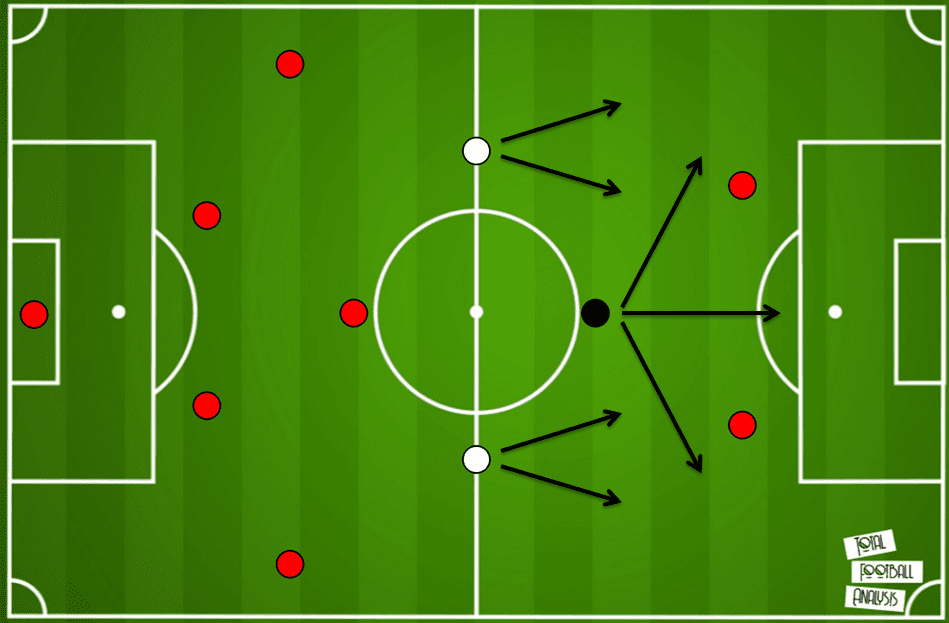
The 4-4-2 diamond has been a subject of popular discussion and seemingly the only possible way to effectively get the likes of Pogba, Fernandes, and van de Beek playing in the same lineup. In this formation, as we saw against PSG when Pogba came off the bench, would see the Frenchman play as either the left or right midfielder in the diamond. Fernandes would almost obviously be at the head considering all the reasons that we mentioned before and Matić would provide the most solidity at the base while McTominay could also be considered for that role. This leaves Pogba, Fred, and van de Beek contesting for the remaining two spots and it is almost certain that the Frenchman takes one of them.
His quality as a player makes him an excellent option as one of the midfield runners and it would greatly benefit Fernandes to have a player with the quality of Pogba moving up to support him in attack. The two may even have a freer role and could interchange positions at times, causing confusion for the opposition and being able to attack more efficiently. Pogba should ideally not have as much to do defensively but should there be an issue, he would be able to recover and help out while the holding midfielder holds up play.
There are, however, some concerns when playing the 4-4-2 diamond. Immediately there is a lack of width that is evident and the United attack would have to be more fluid in terms of their shape in order to move the ball out wide and then work towards the centre. The full-backs would also be a crucial part of providing the required width but with Wan-Bisakka and Shaw being not excellent in attack and often getting caught out on the counter, this may not be the best idea. The signing of Alex Telles may help matters down the left flank but Wan-Bisakka would still have to improve offensively for this to work. The United centre-backs have also been having problems and even with the holding midfielder dropping back to help, the likes of Harry Maguire and Victor Lindelöf have struggled to defend against pace and without proper cover, they could easily be caught out and concede.
The formation is certainly a promising one in terms of attack but Solskjær would most certainly have to organise his defence to suit it and most of all, ensure that his players are disciplined enough to maintain the structure as drifting away from position could lead to major disorganisation and gaps for the opponent to exploit.
Conclusion
All in all, it would be silly for Manchester United to let Pogba go so easily once again or to have him sit on the bench. However, it would certainly not be wise to force him into the side and have him play in roles that would only create problems for the team. The 3-4-1-2 and the 4-4-2 diamond seem like more viable options for Pogba to feature as well as to solve United’s current problems in defence and attack respectively and Solskjær would need to identify which provides better balance for his side.
A player with Pogba’s quality is an asset for any side and whether United can get the best out of him on a regular basis is yet to be seen. Going forward though, we can expect the club to fit Pogba in better roles and we have seen that this is certainly possible. Solskjær would have to address the current issues in those tactics and iron them out but certainly, Pogba can fit in this Manchester United midfield.





Comments